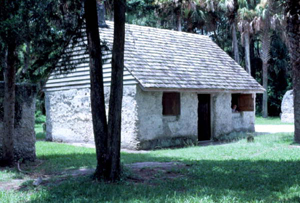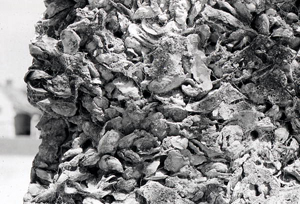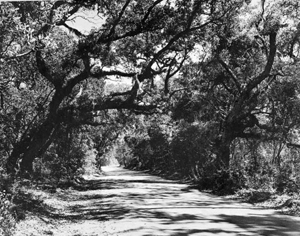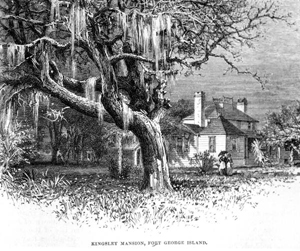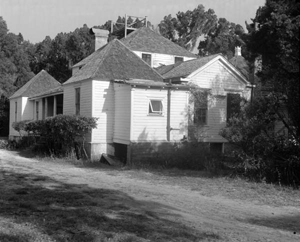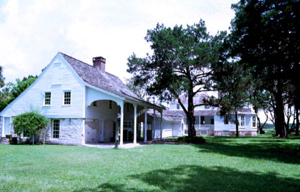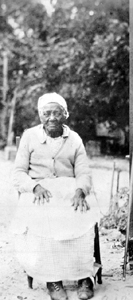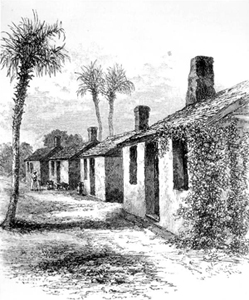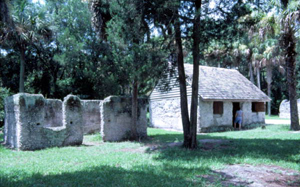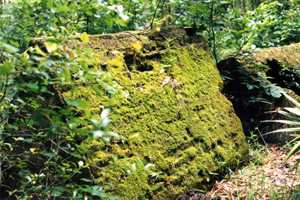Photo Exhibits
Photo exhibits spotlight various topics in Florida history, and are accompanied by brief text intended to place selected materials in historical context.
Images of the Zephaniah and Anna Kingsley Plantation
Zephaniah Kingsley moved to Florida in 1803 and began buying land and slaves. In 1810, he purchased Fort George Island, including its cotton and indigo plantation located on the island's north end that was originally built by John McQueen. Also at this time, Kingsley purchased a young woman from Jolof, Senegambia, named Anta Mujigeen Ndiaye, whom he then freed and made his wife: Anna Kingsley. Together they managed the affairs of what has become known as Kingsley Plantation.
Since the Kingsleys, the plantation has gone through several incarnations: a social club, a tourist attraction, a state park, and finally, a National Historic Site. It boasts the oldest surviving plantation in the state, as well as one of the most complete slave cabin complexes in the nation.
For more information on Zephaniah and Anna Kingsley, see Papers Concerning the Will of Zephaniah Kingsley, 1844, 1846.
Reconstructed tabby slave cabin at Kingsley Plantation State Historic Site: Fort George Island, Florida (1982)
Image Number: PR14333
Tabby is a concrete-like substance made from sand, oyster shells, and lime, a technology transplanted from Africa. The use of tabby was prevalent in Florida and coastal Georgia in the 1700s and early 1800s.
Detail of whole-shell tabby concrete at the Kingsley Plantation State Historical Site : Fort George Island, Florida (1981)
Image Number: FS81160
Houston Avenue, leading up to Kingsley Plantation State Park: Jacksonville, Florida (195-)
Image Number: FPS00277
Drawing of the Kingsley mansion at the Kingsley Plantation (1878)
Image Number: PR10577
Zephaniah Kingsley moved to Ft. George Island in 1810, and is credited with construction of the oldest surviving plantation house in Florida.
Main house under restoration by the Florida Park Service at Kingsley Plantation State Park: Jacksonville, Florida (1956)
Image Number: FPS00761
Kitchen and main residence at Kingsley Plantation State Historic Site: Fort George Island, Florida (1982)
Image Number: PR14329
The kitchen was often called the John "Don Juan" McQueen house, after the person who first built Kingsley Plantation. It was later called the Anna Jai (Anna Kingsley) house, after Kingsley's wife. The kitchen building's foundation was made of tabby.
Former slave at Kingsley Plantation: Fort George Island, Florida (19--?)
Image Number: N048492
Drawing of tabby houses at the Kingsley Plantation (1878)
Image Number: PR10579
The tabby houses were formerly slave quarters.
Tabby slave cabins at Kingsley Plantation Historic State Site: Fort George Island, Florida (1982)
Image Number: PR14332
The cabin on the right was reconstructed by park staff.
Two 19th-century crypts on Fort George Island: Jacksonville, Florida (1998)
Image Number: PR24704
The crypts are believed to be for Ann Bayard Houstoun and Mary McIntosh (daughter of then-owner of Kingsley Plantation John McIntosh), both of whom died in 1808.

 Listen: The Gospel Program
Listen: The Gospel Program